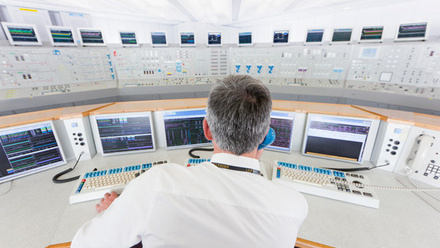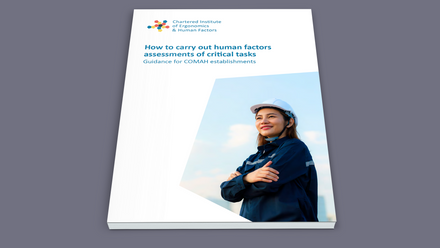Nuclear Learning Pathway
Human factors in nuclear
Nuclear facilities are complex sociotechnical systems within which people perform essential roles in maintaining safety and reliability. In safety-critical sectors such as this, human factors has a vital part to play in optimising human performance by applying knowledge about human characteristics, capabilities and limitations as well as the job, organisational and cultural aspects.
Human factors considers the role of the human within the system and the contribution they make to safety. It looks at physical aspects such as control room design including seating, displays and controls, alarms and warnings, lighting and noise. It explores equipment design, lifting operations, access and egress, maintenance and repair, and site layout. It also looks at procedures, shifts, teamwork, supervision, planning and communication.
A major part of safe working is learning from adverse events. Understanding what went wrong and what led to an incident is a key part of human factors. It enables lessons to be learnt and systems to be improved by discovering and understanding root causes.
Overview
The Nuclear Human Factors Learning Pathway has been developed in response to a request from the industry to help address the acute nuclear human factors skills shortage and the lack of nuclear-specific training courses within human factors. Learners will develop knowledge and skills relevant to the nuclear sector, developing technical competence in human factors and effective communication of human factors principles.
Domains
The Pathway offers four different routes to choose from, using relevant good practice from across the sector and providing opportunity to engage with the wider human factors community. Click on each route to find out who they're for and to download their information sheets.
Operations
For personnel responsible for the day-to-day operations of nuclear facilities.
Design
For professionals involved in the design and engineering of nuclear facilities and systems.
Safety Case
For professionals involved in developing and assessing safety cases for nuclear facilities.
Combined HF
A combination of the first three courses, for personnel looking to make HF their primary role within the industry
Why take the Pathway?
- Enhanced safety: Implementing human factors principles can significantly reduce accidents and incidents, making nuclear facilities safer environments.
- Improved efficiency: Optimising the human-machine interface and workflow can lead to increased efficiency, reduced delays and improving performance.
- Reduced costs: By minimising human error and fatigue-related incidents, nuclear organisations can save substantial costs associated with accidents and disruptions.
- Competitive advantage: By equipping your team with cutting-edge knowledge and skills, position your organisation as a leader in the nuclear sector.
- Compliance: Applying human factors can increase compliance and reduce the risk of penalties and legal issues.Questions you might have
Questions you might have
Who is the nuclear Learning Pathway for?
The Human Factors Nuclear Learning Pathway is designed for individuals wishing to develop their abilities, knowledge and skills in human factors. It's designed to support those from inside the industry (such as licensee and supply chain employees) and outside (for example, human factors professionals who have not previously worked within the sector) in the development of professional human factors skills, helping them understand and be able to apply core skills required for effective practice in the nuclear sector.
What are the entry requirements?
How is it assessed?
There are formative online self-assessment quizzes to aid understanding and summative online end-of-unit assessments.
Will it interrupt my day job?
How long will it take to complete?
When will Level 1 be ready?
Which organisations have been involved in the creation of this Learning Pathway?
The Learning Pathway has been developed with support from various organisations across the sector, including ONR, EDF, Sellafield, AWE, Rolls Royce, Nuclear Waste Services, Frazer Nash, Babcock, Duneray, NDA, SDF, NSSG and Jacobs.





